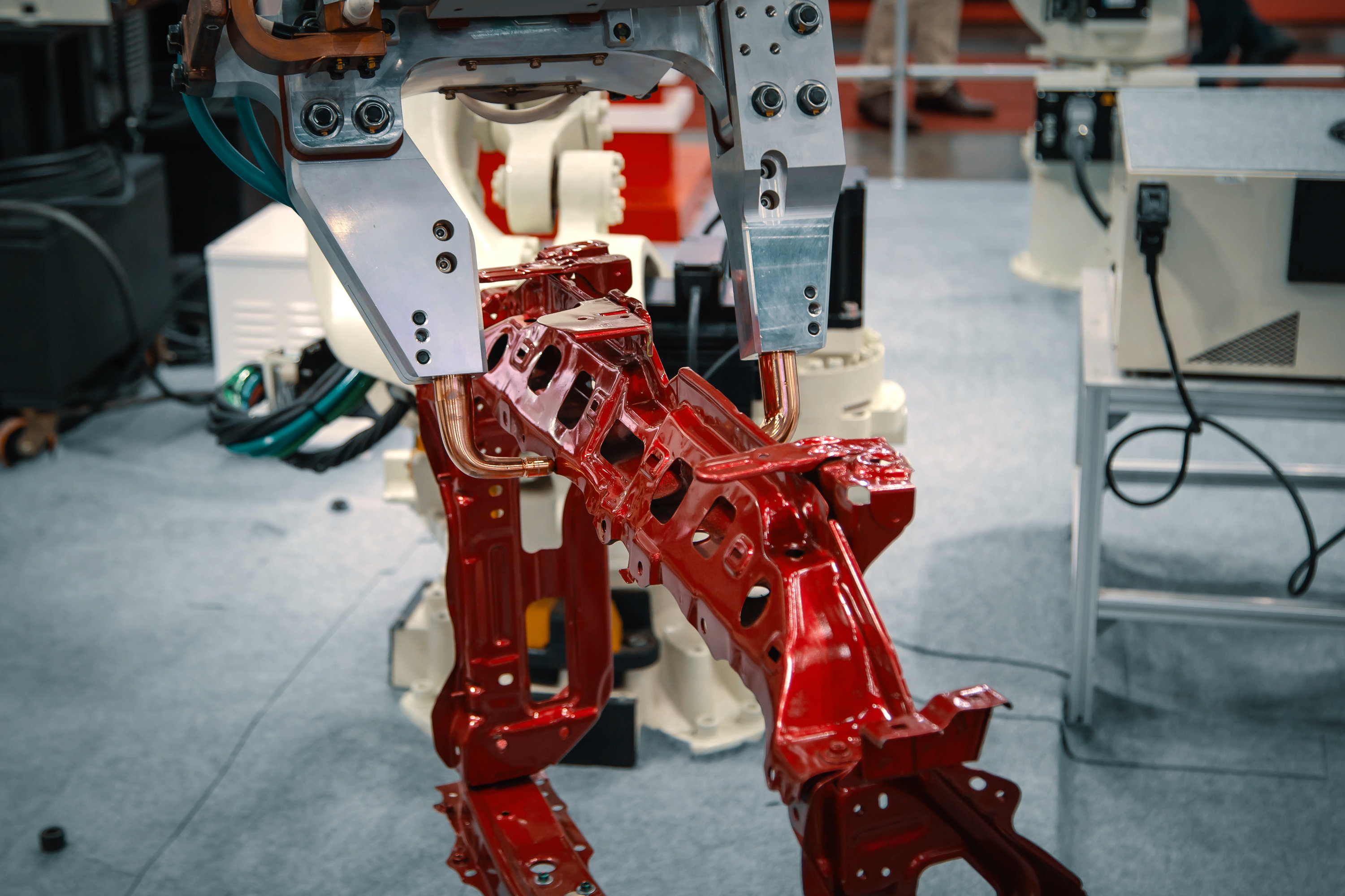Resistance welding, while being a subset of welding practices itself, is a fairly broad category. Many different variations of resistance welding are needed to apply the correct forces to the correct places in different situations. One of the most common variations of resistance welding used in manufacturing facilities is projection welding. We thought it might be useful to give some background information on what the process of projection welding entails, how it is used, and why. (Don’t worry, we’ve included pictures.)
Projection Welding
Projection welding uses the design or shape of the part to make discreet, individual points of contact in order to concentrate the current during the welding process. In most applications, multiple small projections are formed on one surface of the parts to be welded. These projections can be round dimples, elongated ridges, circular, or the extended corners of weld nuts. When the mating parts are brought together, these projections concentrate the current flow and generate the heat in the same locations. Once the projections get hot, they collapse as the weld nuggets form. After cooling, the result is several weld nuggets holding the part together.
How Is Projection Welding Used?
The durability provided by projection welds make them ideal for industrial and mechanical use. The circular ring projection on the bottom of a hydraulic fitting could make a tight hydraulic seal. The cross wire weld could be used in fencing or rebar in a roadway. The weld nut holds the various parts bolted on your automobile. All of these are examples of situations where tight-fitting parts must be assembled and bonded in ways that other welding techniques would be inadequate or inefficient for.
Why Use Projection Welding Instead Of Others Techniques?
The simple answer is the same as always: time and money. The process is generally the same as a spot weld, but in this case, the electrode is not used to concentrate the heat, the part projection or arrangement does this. Multiple welds can be made at the same time when multiple projections are present, making it a very efficient process and not as electrode-dependent as spot welding. Other factors must be controlled; such as alignment, projection consistency, welder follow-up, and in the case of nut welding, thread protection. Projection welds and processes are designed and developed to fit the wide array of applications they’re consistently used for.
The Case For Projection Welding
Projection welding is of critical value to manufacturers and distributors across industries and plays a major role in creating reliable welds for industrial equipment, automobiles, and other machines. It helps drive efficiency by reducing electrode wear and allows sturdy welds to be made where other techniques could not achieve them.
Be sure to follow along with our blog as we’ll be taking a closer look at other variations of resistance welding. We’ll also tackle a number of other topics related to our industry. Follow us on social media to stay in the loop, and feel free to join in the conversation on Linkedin and Facebook.



